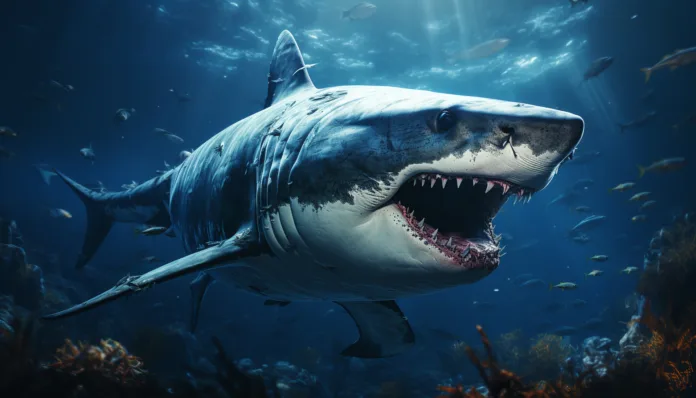New study presents surprising insights into megalodon’s body form
The legendary megalodon, the largest shark to have ever roamed the Earth’s oceans, continues to baffle scientists, prompting a global team of researchers to delve deeper into the mysteries surrounding this colossal predator. In a recent study titled “White shark comparison reveals a slender body for the extinct megatooth shark, Otodus megalodon,” published in Palaeontologia Electronia, researchers challenge previous assumptions about the megalodon’s appearance, providing a fresh perspective on its body form.
Embed from Getty ImagesUnveiling Megalodon’s Elusive Body Form: A Scientific Odyssey
The absence of a complete megalodon skeleton has posed a significant challenge for scientists aiming to reconstruct the creature’s accurate body form. While the white shark has often served as a model species for this purpose, a team led by Phillip Sternes, Patrick Jambura, and Julia Türtschersimolarly adopted a new approach to formulate a novel hypothesis about the megalodon’s body.
New Findings: Megalodon’s Surprising Features
Using a megalodon fossil from the Royal Belgian Institute of Natural Sciences in Brussels and CT scans of a juvenile white shark specimen, the researchers scrutinized the number of vertebrae in these fossils. Their analysis revealed four major concerns with a previous study’s reconstruction, leading to the conclusion that the extant white shark might not be an accurate analog for the extinct megalodon.
The Megalodon’s True Form Unveiled?
Contrary to earlier estimates, the study proposes that the megalodon could have had a different body form than previously believed. The researchers discovered that the megalodon likely had more vertebrae, indicating a more elongated body compared to modern white sharks. While the exact appearance remains speculative, these findings represent a significant step toward deciphering the enigmatic body form of the megalodon.
Implications: A Slower Megalodon?
In addition to challenging previous assumptions about the megalodon’s body, the study suggests that the giant shark might have been slower than initially thought. Although uncertainties persist, this new proposition provides valuable empirical evidence, shedding light on the potential characteristics of the megalodon.
As the scientific community continues its quest to unravel the secrets of this ancient sea giant, the study opens up new avenues for understanding the megalodon’s elusive existence.
